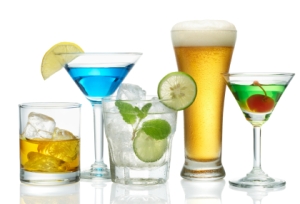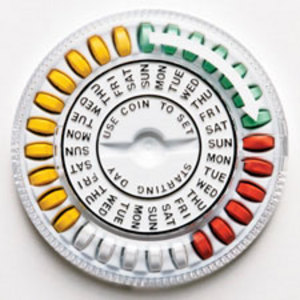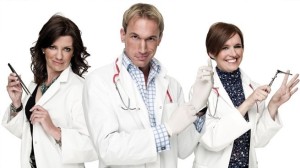
Two or three years ago, e-cigarettes were exotic. These strange sticks, their ends LED-lit and their owners expelling odourless smoke – “It’s vapour!” – would look as futuristic as a Replicant’s food injector. They gave the smoker nebulous powers, namely the ability to smoke on a plane, and they were expensive and hard to find.
Now, they’re everywhere. Even Leonardo DiCaprio was caught sucking on one on set. But are they safe? And what will they really do for the hard-core smoker?
Today the e-cigarette industry is worth around $3 billion globally, outpacing the entire stop-smoking industry including patches, gum, and other addiction killers.
Yet unlike smoking cessation products, which are sold over the counter in pharmacies, e-cigarette companies will never, ever make a claim that e-cigs will treat smoking addiction. In fact, these companies claim the opposite in their marketing materials, citing that they are not intended “to treat, prevent or cure any disease or condition.” This is the same language that appears on other dubious health concoctions
Even though it seems obvious that e-cigarettes are meant to help people tame their addiction to analog cigarettes — and there is even anecdotal evidence suggesting they are more effective than smoking cessation therapies — the claims made by these companies will partially determine the fate of the entire industry.
But before we get into the regulation of tomorrow, let’s look at the history of the tobacco industry.
A BRIEF HISTORY
In 1906, the Food and Drug Administration was created under President Theodore Roosevelt. In 1938, the FDA passed the Food, Drug, and Cosmetics Act, giving the federal government jurisdiction over products like foods, medicines, and other substances that could harm the public health.
For years, that didn’t include tobacco products. It was only in 2009, under President Barack Obama, that the Family Smoking Prevention and Tobacco Control Act (FSPTCA) was put into place, giving the FDA the power to regulate the Tobacco Industry.
Before this, big tobacco was allowed to experiment with new products and market their wares however they pleased, with regulation coming from state governments. In the 1950s, the realities of smoking were just beginning to show their ugly head. We began to realize there was a clear connection between smoking cigarettes and developing cancer and other fatal illnesses.
So what did the industry do? They created something called “harm reduction products”, which were meant to be “safer” than your usual cigarette. In the beginning, this simply meant adding a filter. By the 80′s, companies were taking it a step further.
RJ Reynolds introduced a type of smokeless cigarette called Premier, which seemed to disgust everyone and eventually went off the market, only to resurface itself as the Eclipse. The American Cancer Society claimed that the Eclipse line, which went on sale in 2000, was not as safe as the marketing campaign suggested, as it still delivered carcinogens and other harmful substances.
In other words, harm reduction has long been a strategy for Big Tobacco to keep sales up in the face of… well, cancer. Keeping that in mind, it’s not too much of a surprise that harm reduction products have never really taken off. Until now.
E-CIGARETTES AND HARM REDUCTION
In public perception, smoking cessation products are the good guys. These are the products like Nicoderm CQ and Nicorette that are sold by pharmacies only, used for a temporary period, and regulated as treatment and/or therapy. I quit smoking for a while with the help of the patch, and got more congratulations during that period then I did graduating from NYU, winning State Championships in volleyball, or landing a job at TechCrunch.
Harm reduction products, on the other hand, seem like ploys. Many people hear “safer” and “cigarette” in the same sentence and assume it’s yet another trick to increase sales.
But e-cigarettes are different. The movement wasn’t led by Big Tobacco. The e-cigarette industry began to boom in 2007 led by hundreds of smaller companies. Eventually, Big Tobacco took notice. Unlike the patch, or the gums, e-cigarettes actually made a dent (a small, but noticeable one) in cigarette sales.
Rather than fight it, major tobacco companies are now investing in e-cigarette offerings. Lorillard, the maker of Newport, Maverick and Old Gold cigarettes acquired Blu eCigs for $135 million in April 2012. Reynolds American, which makes Camel, Pall Mall, Kool and others, is now selling its own Vuse e-cigarettes in select cities as a trial run. And Altria (formerly Phillip Morris), seller of Marlboros, now sells an e-cigarette line named MarkTen.
This has pushed distribution of e-cigarettes far beyond what small, independent companies could ever manage.
However, Big Tobacco’s involvement is a double-edged sword. While distribution is greatly increased, pushing these devices into the far reaches of the country, big tobacco also gives off the perception that these devices, like the products they’ve sold for centuries, will probably kill you.
“What are these products?” asks Dr. Michael Siegel, Professor at Boston University’s Public School of Health and supporter of e-cigs. “Are they harm reduction or are they smoking cessation? It’s a tough situation because, on the one hand, you have what it does and on the other you have the claims are that are allowable under the law. It’s a strange situation where they are being regulated as tobacco products. But they are not tobacco products. There’s no tobacco in them.”
SAFETY
To be clear, any product that delivers nicotine into the human body is automatically considered “unsafe.” That’s the nature of nicotine itself. It’s not meant to be in our bodies.
That said, smoking cessation products like Nicoderm and Nicorette are automatically forgiven. Their purpose is to wean you off the nicotine addiction, and then be discarded. No one quits smoking and says, I’m going to use the patch for the rest of my life. That’s not how it works. In fact, doctors who prescribe smoking cessation therapies have strict limits on how long they can continue to provide the patch, gums, etc.
E-cigarettes are different. These companies don’t want you to quit smoking entirely; they simply want you to switch from smoking to vaping. In fact, the business model is built around your return. The idea is that you pay a larger sum up-front, for the device and a first set of cartridges, making an investment in it, and then return to buy refills.
In this way, e-cigarettes are simply a cigarette alternative, and not a therapy to help you quit.
But even though e-cigarettes deliver nicotine into the body, and for an extended period of time, many experts agree that they are much, much safer than combusting cigarettes.
Right now, however, clear cut information on their safety is limited. To start, there have been no finished clinical trials to measure the difference, and holding a clinical trial that is effective becomes difficult knowing that subjects would be exposed to a known carcinogen.
Moreover, the lack of regulation here allows e-cigarette companies to be lazy or negligent. The nicotine dosage may vary from one product to the next, or perhaps they’re using something other than propylene glycol (the standard liquid found in e-cigarettes). They might even have a shoddy battery or wiring that exhausts burning plastic along with the nicotine.
Many e-cigarettes are manufactured in Asia, sold at gas stations, and the consumer is none the wiser that these products haven’t been checked out by any governing body. In short, there is no oversight.
Thankfully, according to Dr. Siegel, e-cigarettes are “orders of magnitude safer” than combusting cigarettes.
“Even if e-cigarettes only cause a five to ten percent reduction in cigarette consumption, you have to understand that from a public health perspective, that is an enormously positive impact,” said Dr. Siegel.
On the other hand, it’s the lack of regulation that makes e-cigarettes potentially dangerous. So what can be done?
REGULATION
This is where things get tricky.
The FDA is set to regulate the e-cigarette industry over the next year, at the latest. How they will regulate them is anyone’s guess.
There are three possible scenarios:
The first is that e-cigarettes will be regulated just like traditional cigarettes, with rules on how they can be marketed. This would still allow for distribution, letting e-cigs be sold anywhere traditional cigarettes are sold, but it would limit these companies’ ability to market themselves as a cigarette alternative, or at all.
The second option is that these products will be regulated in the same way as smoking cessation therapies. They would be sold only in pharmacies, over the counter. This would limit visibility and distribution enormously.
The third option is that the FDA will create brand new regulation for e-cigarettes, which would covers things like dosage, materials used, quality control testing, etc. but would still allow for broad distribution and marketing.
There is a raging debate right now over these options, or more pointedly, the time it will take to get to these options. Those that are pro-e-cigs want to ensure that the regulation is fair, and are willing to wait as long as they’re waiting for something close to option three.
Others believe that the e-cigarette companies are purposefully stalling, asking the FDA to wait for more hard evidence on the effects of e-cigarettes (especially compared to traditional cigarettes) in order to grow marketshare in an unregulated field. They see this as a huge risk considering that the e-cig industry is growing rapidly, and these unregulated products are in the hands of more and more unknowing consumers every day.
Bloomberg is even working to essentially ban e-cigarettes in New York.
Big Tobacco’s involvement in the matter only muddles things further. The industry doesn’t have a great track record when it comes to reducing public harm (or even admitting their products cause it in the first place), so in a way, Big Tobacco’s investment in the industry almost discredits e-cigarettes as just another marketing ploy.
On the other hand, Big Tobacco has the brawn to lobby the FDA in a way that these small manufacturers wouldn’t be able to do. Thanks to Big Tobacco, e-cigarette companies now have a voice in the pending regulation of their products.
The future of the industry is surely in question, but one thing is quite certain: this isn’t the last you’ll hear about e-cigarettes and the debate is heating (not burning) up.
Like this?











